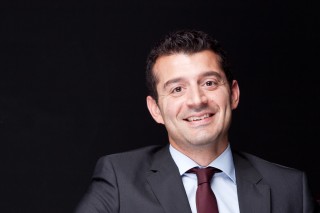Industry Spotlight: Q&A with Dr. Mark Witinski of Pendar Technologies
ALERT recently caught up with Dr. Mark Witinski, Vice President of Chemical Analysis & Security Group, at Pendar Technologies. Dr. Witinski served as co-founder and President of Eos Photonics prior to the merger which formed Pendar Technologies. At Pendar Technologies, he focuses primarily on applications development, business to business strategic partnerships, and government sales.
1) Can you describe the work Pendar Technologies does and how it contributes to the Homeland Security Enterprise?
Pendar’s work in furthering the Homeland Security Enterprise takes a few forms. The most critical one – the one that is the focus of our first product – is giving security and military personnel the tools to analyze unknown chemicals in the field and without physical contact. This is generally referred to as “Standoff Detection.”
2) Pendar Technologies is one of ALERT’s industrial members. How has collaboration with ALERT been beneficial to Pendar Technologies?
For Pendar, there are two major benefits to our longstanding ALERT membership. One is direct interaction with thought leaders in the Homeland Security space, where we learn first-hand about the contemporary challenges and frontiers in various security settings. The other major benefit has been formal and informal collaborations with other members of the ALERT community that serve to address those challenges. For instance, Pendar has pursued new sensing modalities with other industrial members and has also fostered collaborations with academic research groups from ALERT affiliated universities including: Northeastern University, Purdue University, Tufts University, The University of Rhode Island, and The University of Puerto Rico.
3) Can you describe some of the technology that has been developed or improved upon through the Pendar Technologies/ALERT partnership?
Sure. Pendar uses a unique laser technology called the Quantum Cascade Laser. Critical advancements in that technology were made through two years of partnership with ALERT and The John Adams Institute for Innovation (JAII). This work was especially important as it came during a very formative time in our company. Working with ALERT and JAII helped to reduce the market risk pursuing the technological path that we were on.
4) You completed your doctorate in Chemical Physics at Cornell University where your research focused on molecular beams and laser spectroscopy to examine the dynamics of molecular collisions. What inspired you to pursue this research area?
This is an interesting question—one I even ask myself sometimes. My graduate work, and my postdoc work for that matter, were both focused on gas phase chemistry. Specifically, I sought to examine the detailed aspects of individual molecular reactions to gain the understanding that underpins how, for instance, ground level pollutants form and how they are removed. The atmosphere is a reactor—a very large and hard to control reactor. As a health matter, dangers lie not only in exposure to chemicals that are directly emitted. Rather, substances and their levels are governed by a complex set of coupled reactions, reactions which I wanted to understand as fully as possible before even attempting to comment on a solution. In this process, I became exposed to many laser technologies, including the Quantum Cascade Laser.
5) Can you describe your current role at Pendar Technologies and how your technical background prepared you for this role?
What I try to do is to listen to leaders from the agencies that all of us rely on to enhance our security. Often, these conversations reveal that many agencies, as well as the Defense Departments of the world share similar needs, although they may not communicate directly with one another. If a security capability is both desired and is lacking in multiple user groups, it tells me that a new capability is truly needed for protection of the public and of military forces. I then work with other Pendar scientists and engineers to see if we can offer a solution.
6) What emerging technology or research in the chemical analysis and security domains are you most excited about?
One of the things about chemical analysis that is not immediately obvious is that, at the most fundamental of levels, we basically have the tools that we are going to have for the foreseeable future: Mass Spectrometry, Infrared Spectroscopy, Chromatography, Raman Spectroscopy, X-Ray Imaging, Ion Mobility Spectrometry, and the list goes on.
What advances the capabilities of these methods is how they are practiced and integrated in a way that leverages advances in other disciplines. For instance, modern systems are engaging high speed portable computing, ever improving camera systems, additive manufacturing technology, wireless communications, etc… It is through careful integration and mastery of the entire chemical/instrument/user system that disruptive advances occur. It seems clear that the necessity of end-to-end mastery in this space is causing security developers to collaborate more, and venues like ALERT are key in fostering needed collaborations.


There are currently no comments.
The comments are closed.